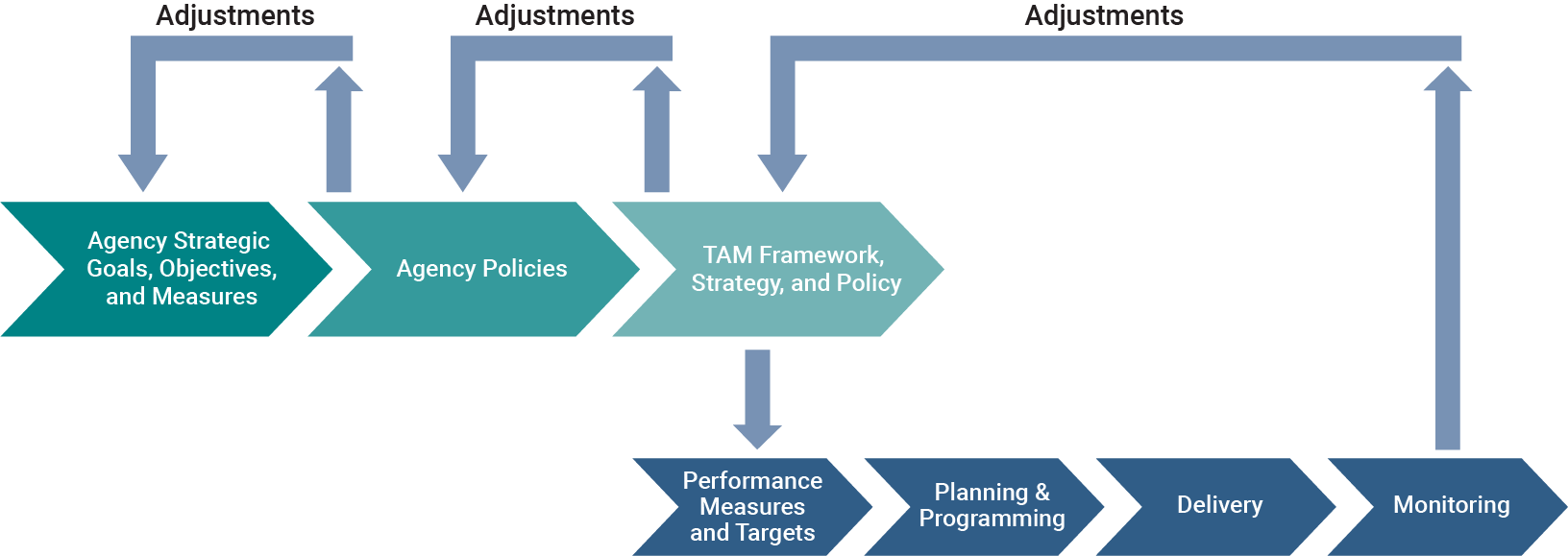2.1.1.1
Overview
TAM Webinar #34 - Integrating PM2 Targets with the TAMP
TAM is not a stand-alone practice that is only applicable to select areas of a DOT. Ideally, TAM principles and practices should be integrated within an agency's vision, mission and strategy documents (see Figure 2.1). TAM promotes accountability, preservation, data-driven decision-making and the optimization of resources; all of these are broader strategic goals often outlined in plans and policies other than a TAMP. Aligning TAM with the agency’s strategic documents helps ensure an agency's vision is all encompassing and cohesive.
These documents include:
- Agency-wide strategic plan and/or business plan (including long-range plans)
- Agency-wide financial plan
- State long-range plan
- Other performance plans (safety, mobility, freight, etc.)
In addition, some agencies may choose to adopt a TAM policy with principles that the agency will follow. A TAM policy can be used to communicate the purpose of TAM and build understanding and support for TAM within the agency. It can also help to sustain a TAM approach through leadership changes. See the next section for further information on creating a TAM policy.
TIP
'Line of Sight' is a concept that describes alignment of an agency's asset management practice to its strategic goals and business objectives.
